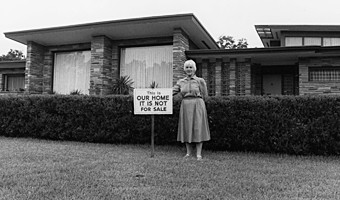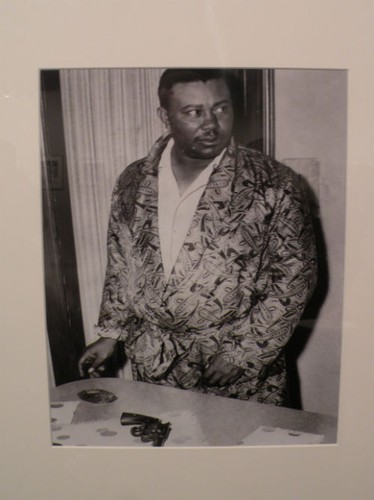Riverside Terrace
Introduction
Text-to-speech Audio
Images
In the 1960s some Whites who wanted the neighborhood to stabilize as an integrated neighborhood posted signs stating "This Is Our Home It Is Not For Sale."

Jack Caesar after the bombing.

Backstory and Context
Text-to-speech Audio
In 1952, the first African Americans to move in the neighborhood was the family of Jack Caesar, a wealthy and successful cattleman. They were able to move in despite the fact that African Americans were restricted to Black neighborhoods at this time. Unfortunately, someone planted a bomb on his porch that detonated, however no one was hurt and the perpetrator of the incident was caught.
Soon, other African American families moved to the neighborhood, which had the aforementioned effect of white residents moving to the suburbs. An effort to create an integrated neighborhood, however, tried to stem the flow of whites leaving. It was called "This is our home, it is not for sale." In the end is was not successful, as the majority of whites left by the late 1960s. The African Americans who moved into the neighborhood were prominent and wealthy citizens, including professors, doctors and lawyers. Not all of the houses were occupied, however and eventually many fell into disrepair by the 1980s. Beginning in the 2000s, revitalization efforts began and new homeowners, many of whom are gay, started to buy and fix up the abandoned houses.
Sources
Kaplan, Barry. "Race, Income, and Ethnicity: Residential Change in a Houston Community, 1920-1970." Winter, 1981: 178-202. https://houstonhistorymagazine.org/wp-content/uploads/2014/06/race-income-ethnicity-HR-3.1.pdf.
Shilcutt, Katharine. "Houston 101: The Forgotten Mansions of Riverside Terrace." Houston Press. August 28, 2009. http://www.houstonpress.com/news/houston-101-the-forgotten-mansions-of-riverside-terrace-6746665.
Tardy, Courtney. "Landmark Designation Report." City of Houston: Planning and Development Department. http://www.houstontx.gov/planning/HistoricPres/landmarks/12L261_Duke-Shapiro.pdf.
